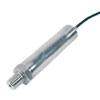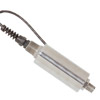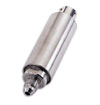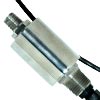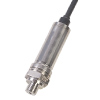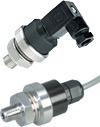How to Solve Car Fluid Pressure Measurement Challenges
The automobile industry is one of the most strictly regulated in the world. Manufacturers must comply with a wide range of stringent standards, particularly in Europe where regulations are among the strictest of all.
Achieving compliance requires measuring and testing variables, many of which are related to the pressure of car fluids and media.
For example, a vehicle’s cooling, hydraulic transmission, and fuel injection systems – among many others – must all be proved safe against detailed specifications before a car can be sold.

Challenges of measuring pressure inside a car
This is no simple task for a number of reasons. A car is not a laboratory, and its unique environment makes measuring pressure quite tricky.
Four common issues include particle in the fluid, vibrations, high temperatures and electrical noise.
Particles in the fluid
The most challenging issue is the likely presence of particles in the medium being measured.
Many standard pressure sensors feature an orifice that takes in fluid for measurement. If particles get stuck inside this orifice, the diaphragm will be unable to sense changes in pressure. The sensor could also be damaged.
Vibrations
When a car engine is switched on, it produces many vibrations that can cause a mis-read in the pressure transducer.
These engine vibrations can cause the transducer to vibrate, causing noise in the output. The pressure transducer could also be damaged.
High temperatures
It is not uncommon for the temperature of car fluids to go above 99°C. The electronics inside most pressure sensors are not able to work in such heat.
One solution to this issue is to use small ‘standoffs’ of the media, if it is too hot to measure normally.
Read this white paper to understand the techniques of measure pressure of high temperature media.
Electrical noise
Another challenge is how to counter electrical noise produced by the engine.
If a pressure transducer produces a low mV output, then the engine’s stronger electrical noise will ‘shadow’ it and cause errors in the reading. The answer is to use a volts- or milliamps-output pressure transducer, which provide a higher output that is suitable for industrial environments.
Specialised flush diaphragm transducers as a solution
Fortunately, specialised pressure transducers designed for the automobile industry can solve all of the problems above.
OMEGA Engineering PX600 and PX61C Flush Diaphragm Pressure Transducers feature:
- No orifice, and therefore no risk of blockage by particles in suspension
- Strong performance during engine vibrations
- Volt output for accurate readings during electrical noise
Read more about the
PX600 Flush Diaphragm Pressure Transducer
Read more about the
PX61C Flush Diaphragm Miniature Transducer
If you would like to know more, or discuss your specific requirements with an expert, the OMEGA Engineering technical team is here to help.
Contact us today.
pressure transducer | Related Products
 CLOSE
CLOSE


